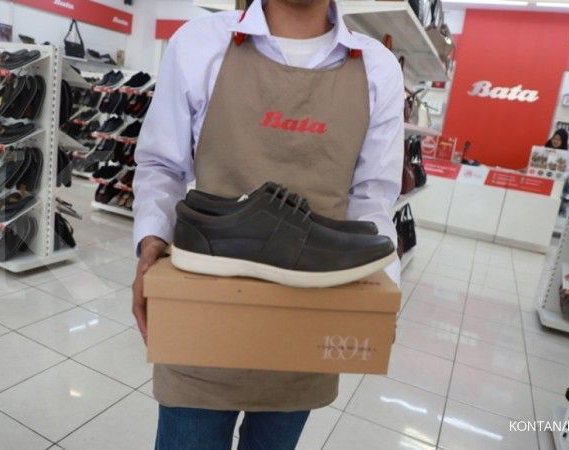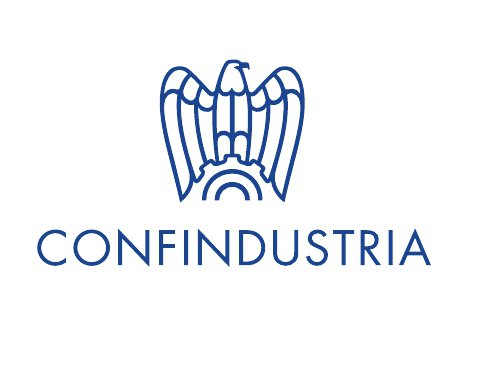Manufacturing is expanding. The PMI index at 53.7 exceeded the PMI of ASEAN countries (52.7). Manufacturing exports account for 76.49% of the total. Footwear recorded the highest growth (+33.42%), in pairs, from 793.8 million to 1.05 billion. They drive foreign companies, which absorb most of the labor. PT Shoes Bata Tbk (BATA)plans for 2022: a mixture of local market and exports.
The manufacturing industry is in an expansive phase
At the beginning of 2022, the results of the Indonesian Manufacturing Purchasing Manager’s Index (PMI) for January were at the level of 53.7 based on the IHS Markit survey. This figure has increased compared to December last year which was at the 53.5 level.
An index above 50 indicates that the manufacturing industry is in an expansionary phase. Indonesia’s manufacturing PMI in January 2022 outperformed the average manufacturing PMI of ASEAN countries (52.7), Malaysia (52.8), Philippines (50.0), South Korea (51.9), Russia (51.8) and China (49.1).
“We are very grateful and grateful to the players in the manufacturing industry in the country. This good news is a sign or indicator that industry players are increasingly optimistic about current economic conditions,” Industry Minister Agus Gumiwang Kartasasmita said in an official statement.
In terms of exports, the manufacturing industry continues to make the largest contribution. The value of exports of the manufacturing industry in 2021 is 177.10 billion dollars. This figure exceeded the value of manufacturing exports for all of 2020 by 131 billion rupees and was even higher than the 2019 export result which was 127.38 billion rupees. Meanwhile, the realization of investments in the manufacturing sector in 2021 was recorded at 325.4 trillion rupees, an increase of 19.24% compared to the value of the investment in 2020.
In terms of employment, the manufacturing sector has shown a recovery. Along with the increase in the manufacturing sector due to the impact of the pandemic, there will be additional employment of 1.2 million people in 2021, so that the total number of workers in this sector will increase again to 18.64 million people.
According to IHS Markit, Indonesia’s manufacturing sector continued to expand at a solid pace in early 2022. Demand conditions were generally solid, in part due to a record increase in foreign sales that supported a sharper increase in manufacturing output. This in turn led to an increase in purchasing activity and employment aspects.
Responding to the results of the Indonesian Manufacturing PMI survey in January 2022, Jingyi Pan as Associate Economic Director of IHS Markit, said that operating conditions in the Indonesian manufacturing sector improved in early 2022. The same claims the association of footwear manufacturers (Aprisindo) which had recorded that the circulation of footwear in the retail market, in 2020-21, was in the position of 50-75% compared to the pre-pandemic condition of Covid-19 and the use of the national footwear industry had fallen below the level of 40%.
Since the beginning of this year, customer demand has grown to a very high level, supported by a record growth in new orders from abroad. Meanwhile, employment and buying activity are on the rise, as if to reflect better economic conditions.
“Delivery rates from suppliers have improved a lot, which is also a positive sign. It is important to observe whether conditions continue to improve, because price pressures are still strong due to persistent supply problems,” explained Jingyi Pan.
The consumption of clothing and shoes increases, the textile-leather supply chain becomes one of the bases for the recovery of the manufacturing industry
The recovery of the textile industry this year will depend on the increase in domestic consumption. The reason is that, although export demand is high, logistical constraints, such as container shortages and high shipping costs, are still obstacles. Comforted by the news of a greater purchasing power of the population, the director of the textile, leather and footwear sector at the Ministry of Industry, Elis Masitoh, believes that the textile and leather supply chains will grow positively this year, after recording another contraction in 2021. Data from the central statistics agency, Badan Pusat Statistik (BPS), for the textile-leather and clothing-footwear sector, indicate a contraction of -4.08% during 2021, although it was able to grow by 5.94% in the fourth quarter of 2021. One of the outputs that can increase performance is the clothing and footwear segment for local consumption.
“The focus of this year’s growth, of course, remains on consumption, which is expected to increase, net exports will increase, and investment will also continue,” Elis told Bisnis.
Elis continued the topic of growth factors, in particular domestic consumption for clothing and footwear, as well as maintenance services, which have improved in the sector.
In detail, last year the textile industry grew by -6.28 percent and that of clothing by -3.31 percent. Meanwhile, the leather, leather goods and footwear industry grew by 7.75%.
The average service capacity of the textile industry last year was recorded at 69.42%, 74.4% for the clothing industry and 72.05% for the leather, leather goods and footwear industry.
In terms of production volume, the textile industry is also still recording a contraction of 3.97% from 7.20 million tons in 2020 to 6.92 million tons in 2021. Meanwhile, the volume of clothing production grew by 14.47% from 1.41 million tons in 2020 to 1.62 million tons in 2021. The leather, leather goods and footwear industry recorded the highest growth of 33.42% from 793.8 million pairs to 1.05 billion pairs in 2021.
Logistical constraints will continue to suppress export performance this year. Meanwhile, domestic consumption can be stimulated by the import substitution program, the imposition of trade remedies such as import duties of security measures, Bea Masuk Tindakan Pengamanan (BMTP), for textiles, carpets, curtains, and clothing. “So, to increase domestic consumption, especially public spending on shoes and uniforms, there is a program, the Tingkat Komponen Dalam Negeri – TKDN [certificates/bonuses on the level of national content in products] to attract domestic buyers to various promotional events,” Elis explained.
Foreign companies operating in Indonesia are driving forces
Foreign companies absorb more labor than local ones. This was revealed by the head of the Jepara One Stop Integrated Service and Investment Service, or Dinas Penanaman Modal dan Pelayanan Terpadu Satu Pintu (DPMPTSP), Hery Yulianto, together with an associate expert policy analyst, M Zainul Arifin. It was explained that in 2021 employment in foreign-owned companies in Jepara reached 27,623 people. Meanwhile, in the companies owned by domestic residents only 21,834 people. Arifin said the foreign-owned companies, Pemilik Modal Asing (PMA), that absorb most of the labor are in the leather goods and footwear industry. The number is up to 15,600 people. The value of the investment in local government is also great. It is worth more than 420 million IDR in a year. Then, another sector that also absorbs a lot of energy is the textile industry. The number reached 5,457 workers. The value of the investment has touched more than Rp. 84 billion. Instead, for companies with national capital, Pemilik Modal Dalam Negeri (PMDN), the sector that absorbs the most labor is the wood industry.
BATA’s investment growth example, a combination of local market and exports
PT Shoes Bata Tbk (BATA) has prepared a series of corporate programs to face 2022. To support its plan, this shoe factory has prepared a capital expenditure of more than $1.5 million for this year.
Bata Indonesia Country Manager Ajay Ramachandran said Bata is making the best preparations to face 2022, starting with offline stores, online through e-commerce, human resources (HR), marketing, factories, and other investments. Ajay says preparations are on the right track so far.
“In general, we see 2022 as a normal year. The first quarter could be full of challenges due to the emergence and surge of the Omicron variant of Covid 19”, he explained to the magazine Kontan.co.id on Wednesday (16/2).
Meanwhile, Ajay also saw that the Covid-19 pandemic earlier this year had an impact on the slight delay in the supply of raw materials and finished products from China. Despite the challenges faced, BATA’s management has prepared a set of business agendas to realize business opportunities in 2022.
Ajay explained that his group will focus on several agendas, namely achieving goals for organizing, expanding, and strengthening retail stores in the right positions. Then, lead ecommerce and omnichannel businesses through the company’s website, as well as marketplaces and in-store sales. In addition, BATA will also keep production at an optimal level.
To support the four business agendas, Ajay revealed that his group is preparing a strong capital expenditure in 2022 of more than $1.5 million for all business agendas, including new stores, restructurings in existing stores, and omnichannel implementation.
At the end of last year, BATA announced that it had founded a subsidiary called PT Shoes Bata Online, which also caters to foreign customers with local production.
Launching the Indonesia Stock Exchange (IDX) Disclosure on September 30, 2021, BATA’s corporate secretary, Theodorus Warlando, explained that PT Shoes Bata Online is engaged in retail trade through media of textile raw materials, clothing, footwear and personal goods and portals of websites, or digital platforms.
The latest news, Ajay explained that PT Shoes Bata Online has made a very positive contribution to BATA. ”The sales of the subsidiary are very encouraging for 2022 and their performance is far superior to the plan. This branch can drive an additional 5% of our existing business,” he said.
With the commercial agenda and the support of its new online subsidiary, BATA’s management is optimistic for 2022.



